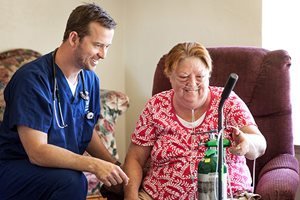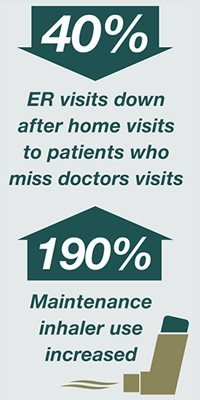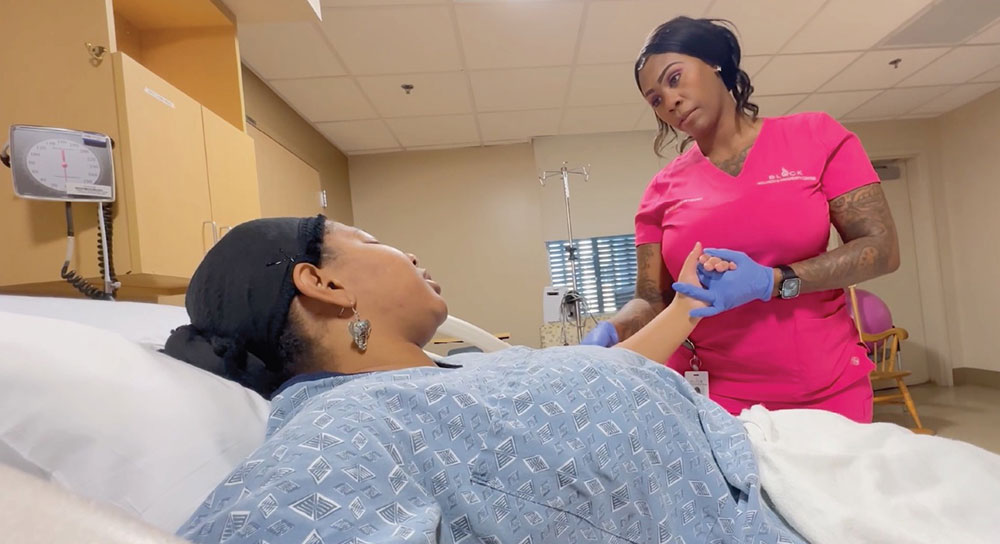 |
| Nurse Practitioner Richard Allison teaches a patient with COPD how to use her oxygen tank during a home visit. Patients in the Community Regional Medical Center /UCSF Fresno Chronic Lung Program get home visits by a team that includes Allison, a respiratory therapist, a social worker and an asthma educator to check on why they miss appointments or to help identify triggers in their homes and lifestyle changes that will help keep them out of the emergency department. |
Richard Allison, nurse practitioner at the Chronic Lung program presented research findings from Dr. Jain's study on population health management to the CHEST 2016 annual meeting, which brings clinicians and researchers from around the globe together annually to present unique research studies on pulmonary medicine, critical care medicine, and sleep medicine topics. This study was among the few that were highlighted by CHEST as providing novel insights.
 |
| Vipul Jain, MD, pulmonologist and medical director for the chronic lung disease program |
The chronic disease management clinical team intensely monitors patients’ lung function, teaches them how to use their medications and inhalers more effectively, helps them quit smoking and visits their homes to see if environmental changes can help. The patients who participate in the program see significant health improvements, said Dr. Jain. A study he published in 2014 showed these patients reduced their emergency department visits for respiratory problems by 79% and reduced hospitalizations at Community Regional by 65%. Community’s chronic lung program is one of the few integrated programs in the country with such success and was also found to be cost effective.
“The problem is that there is a small subset of patients that do not show up at the program, and you can’t help them,” Dr. Jain said. An intervention team was sent to find and visit these patients in their home if they missed three or more scheduled physician office visits, usually set up after patients had several visits to the Community Regional emergency room for acute lung problems.
 During home visits, Community’s team – which includes a nurse practitioner, respiratory therapist and social worker – talks with patients about the severity of their lung disease and assesses patients’ lung function with a portable spirometry. The team also looks for asthma triggers that may be present in the home environment and provides education in the home on medications, how to use inhalers and how to properly use supplemental oxygen. The patients who were missing doctor visits had been using their maintenance inhalers about 22% of the time; that rate nearly tripled to 65% after one home visit and education on inhaler use.
During home visits, Community’s team – which includes a nurse practitioner, respiratory therapist and social worker – talks with patients about the severity of their lung disease and assesses patients’ lung function with a portable spirometry. The team also looks for asthma triggers that may be present in the home environment and provides education in the home on medications, how to use inhalers and how to properly use supplemental oxygen. The patients who were missing doctor visits had been using their maintenance inhalers about 22% of the time; that rate nearly tripled to 65% after one home visit and education on inhaler use.“Our patients feel special when we visit them and it helps establish a patient-provider relationship” said D. Richard Allison, a nurse practitioner at the chronic lung program who also leads home visits. “And the home visits help us find simple problems that we can help solve to make big differences in our patients’ breathing.”
Erin Kennedy reported this story. Reach her at MedWatchToday@communitymedical.org





